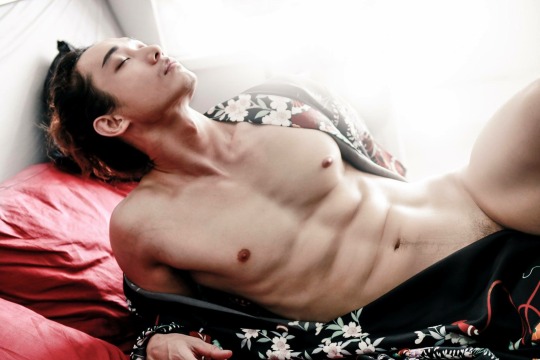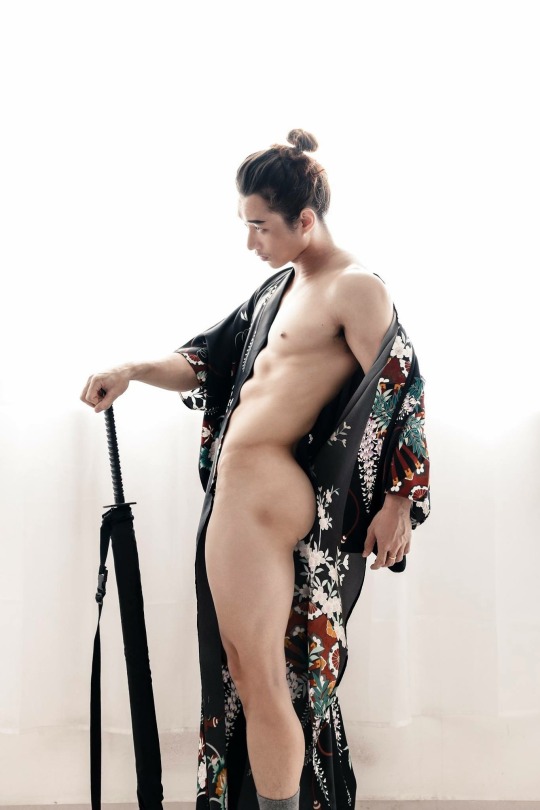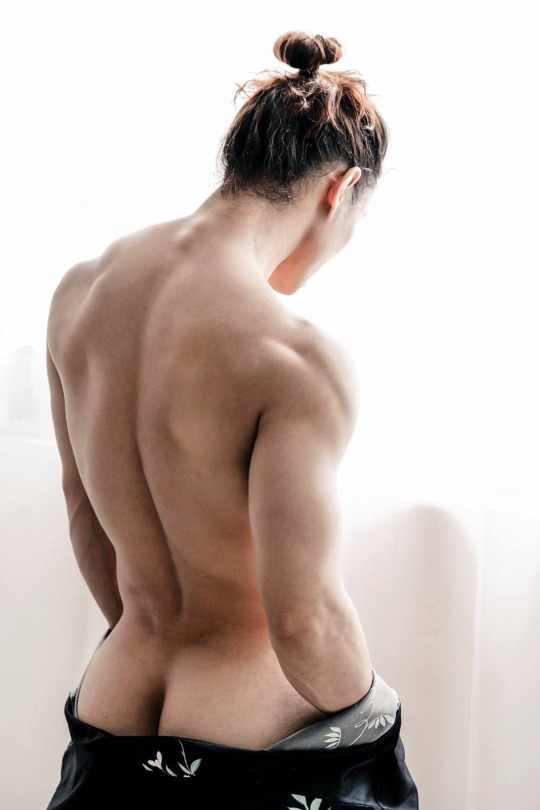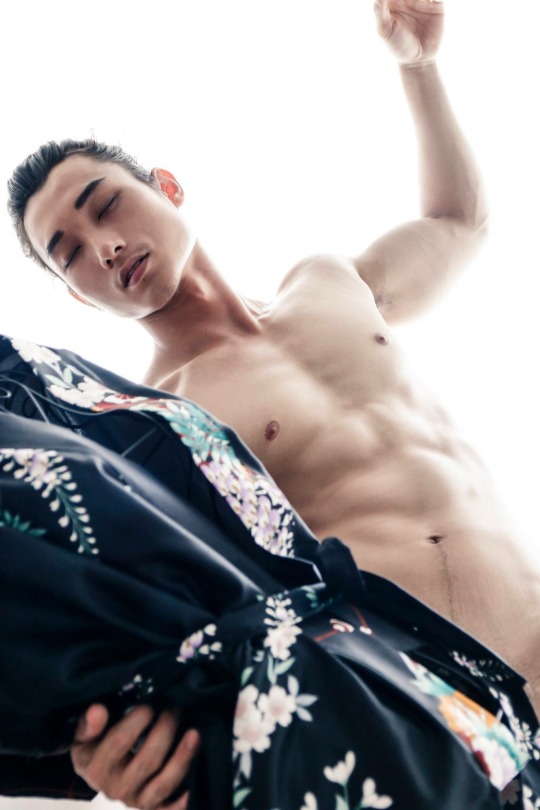Text
pssst writers, if you are eternally seeking character creators that will let you visualise your brain babies: capcom have released the character creator for the upcoming dragon's dogma II, to download and use for free regardless if you've pre-ordered the game, and oh my god it is so detailed. Scars? Got oodles of em! Diverse body types? You bet!* Wrinkles? Yup! Fantasy-appropriate colour options? That too! (also your character can be a cat person). 50+ hairstyles! The ability to have missing teeth! Complete control over body proportions! I'm having so much fun bringing my characters to life rn 😍
(*with the sad caveat that there's little by way of physical disability as far as I've managed to work out, save for scarred-closed eye(s))
1K notes
·
View notes
Text
anyway just a reminder for the myth lovers out there
king arthur was welsh. merlin was welsh. camelot was in wales. the lady and the lake she pops out of; welsh. excalibur; magic inanimate welsh object. etc.
on the way to see family, i drive past a lake that in which is welsh legend, is the last resting place of excalibur.
i’m just saying in my experience a lot of these legends had been so anglo-fied in the past and it’s like, all this cool shit is celtic welsh legend.
88K notes
·
View notes
Text

all RIGHT:
Why You’re Writing Medieval (and Medieval-Coded) Women Wrong: A RANT
(Or, For the Love of God, People, Stop Pretending Victorian Style Gender Roles Applied to All of History)
This is a problem I see alllll over the place - I’ll be reading a medieval-coded book and the women will be told they aren’t allowed to fight or learn or work, that they are only supposed to get married, keep house and have babies, &c &c.
If I point this out ppl will be like “yes but there was misogyny back then! women were treated terribly!” and OK. Stop right there.
By & large, what we as a culture think of as misogyny & patriarchy is the expression prevalent in Victorian times - not medieval. (And NO, this is not me blaming Victorians for their theme park version of “medieval history”. This is me blaming 21st century people for being ignorant & refusing to do their homework).
Yes, there was misogyny in medieval times, but 1) in many ways it was actually markedly less severe than Victorian misogyny, tyvm - and 2) it was of a quite different type. (Disclaimer: I am speaking specifically of Frankish, Western European medieval women rather than those in other parts of the world. This applies to a lesser extent in Byzantium and I am still learning about women in the medieval Islamic world.)
So, here are the 2 vital things to remember about women when writing medieval or medieval-coded societies
FIRST. Where in Victorian times the primary axes of prejudice were gender and race - so that a male labourer had more rights than a female of the higher classes, and a middle class white man would be treated with more respect than an African or Indian dignitary - In medieval times, the primary axis of prejudice was, overwhelmingly, class. Thus, Frankish crusader knights arguably felt more solidarity with their Muslim opponents of knightly status, than they did their own peasants. Faith and age were also medieval axes of prejudice - children and young people were exploited ruthlessly, sent into war or marriage at 15 (boys) or 12 (girls). Gender was less important.
What this meant was that a medieval woman could expect - indeed demand - to be treated more or less the same way the men of her class were. Where no ancient legal obstacle existed, such as Salic law, a king’s daughter could and did expect to rule, even after marriage.
Women of the knightly class could & did arm & fight - something that required a MASSIVE outlay of money, which was obviously at their discretion & disposal. See: Sichelgaita, Isabel de Conches, the unnamed women fighting in armour as knights during the Third Crusade, as recorded by Muslim chroniclers.
Tolkien’s Eowyn is a great example of this medieval attitude to class trumping race: complaining that she’s being told not to fight, she stresses her class: “I am of the house of Eorl & not a serving woman”. She claims her rights, not as a woman, but as a member of the warrior class and the ruling family. Similarly in Renaissance Venice a doge protested the practice which saw 80% of noble women locked into convents for life: if these had been men they would have been “born to command & govern the world”. Their class ought to have exempted them from discrimination on the basis of sex.
So, tip #1 for writing medieval women: remember that their class always outweighed their gender. They might be subordinate to the men within their own class, but not to those below.
SECOND. Whereas Victorians saw women’s highest calling as marriage & children - the “angel in the house” ennobling & improving their men on a spiritual but rarely practical level - Medievals by contrast prized virginity/celibacy above marriage, seeing it as a way for women to transcend their sex. Often as nuns, saints, mystics; sometimes as warriors, queens, & ladies; always as businesswomen & merchants, women could & did forge their own paths in life
When Elizabeth I claimed to have “the heart & stomach of a king” & adopted the persona of the virgin queen, this was the norm she appealed to. Women could do things; they just had to prove they were Not Like Other Girls. By Elizabeth’s time things were already changing: it was the Reformation that switched the ideal to marriage, & the Enlightenment that divorced femininity from reason, aggression & public life.
For more on this topic, read Katherine Hager’s article “Endowed With Manly Courage: Medieval Perceptions of Women in Combat” on women who transcended gender to occupy a liminal space as warrior/virgin/saint.
So, tip #2: remember that for medieval women, wife and mother wasn’t the ideal, virgin saint was the ideal. By proving yourself “not like other girls” you could gain significant autonomy & freedom.
Finally a bonus tip: if writing about medieval women, be sure to read writing on women’s issues from the time so as to understand the terms in which these women spoke about & defended their ambitions. Start with Christine de Pisan.
I learned all this doing the reading for WATCHERS OF OUTREMER, my series of historical fantasy novels set in the medieval crusader states, which were dominated by strong medieval women! Book 5, THE HOUSE OF MOURNING (forthcoming 2023) will focus, to a greater extent than any other novel I’ve ever yet read or written, on the experience of women during the crusades - as warriors, captives, and political leaders. I can’t wait to share it with you all!
29K notes
·
View notes
Text
Fantasy Guide to A Great House (19th-20th Century) - Anatomy of the House
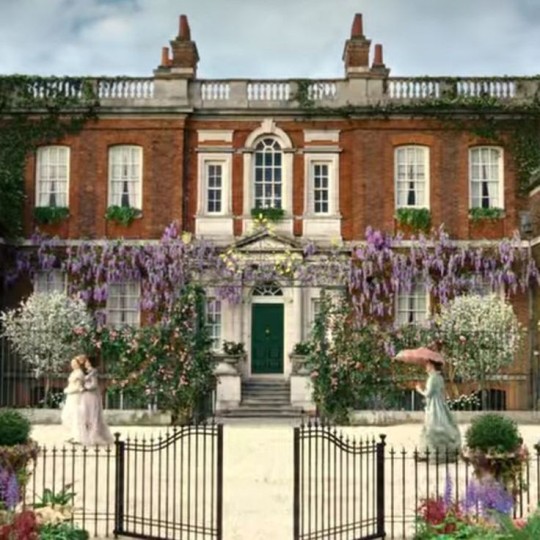
When we think of the Victorians, the grand old Gilded Age or the Edwardians, we all think of those big mansions and manors where some of our favourite stories take place. But what did a great house look like?
Layout

All great houses are different and some, being built in different eras, may adhere to different styles. But the layout of certain rooms usually stayed somewhat the same.
The highest floors including the attic were reserved the children's rooms/nursery and the servants quarters.
The next floor would be reserved for bedrooms. On the first/ground floor, there will be the dining room, drawing room, library etc.
The basement/cellar would be where the kitchens and other food related rooms would be. Servants halls and boot rooms may also be down here too along scullery, where sometimes a maid would clean.
Rooms used by Servants
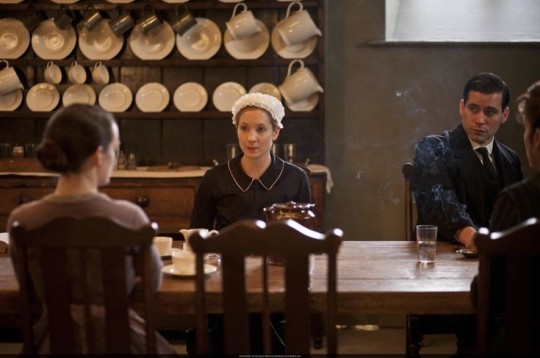
Boot Room: The Boot Room is where the valets, ladies maids, hallboys and sometimes footmen clean off shoes and certain items of clothing.
Kitchen: The Kitchen was usually either in the basement or the first floor of the house, connected to a garden where the house's vegetables were grown.
Butler's Pantry: A butler's pantry was where the serving items are stored. This is where the silver is cleaned, stored and counted. The butler would keep the wine log and other account books here. The butler and footmen would use this room.
Pantry: The Pantry would be connected to the kitchen. It is a room where the kitchens stock (food and beverages) would be kept.
Larder: The larder was cool area in the kitchen or a room connected to it where food is stored. Raw meat was often left here before cooking but pastry, milk, cooked meat, bread and butter can also be stored here.
Servants Hall: The Servant's Hall was where the staff ate their meals and spent their down time. They would write letters, take tea, sew and darn clothes. The servants Hall would usually have a fireplace, a large table for meals, be where the servant's cutlery and plates would be kept and where the bell board hung. (these bells were the way servants where summoned)
Wine Cellar: The wine cellar was where the wine was melt, usually in the basement. Only the butler would be permitted down there and everything would be catalogued by him too.
Butler's/Housekeeper's sitting rooms: In some houses, both the butler and the housekeeper had sitting rooms/offices downstairs. This was were they held meetings with staff, took their tea and dealt with accounts.
Scullery: The scullery was were the cleaning equipment was cleaned and stored. The scullery may even also double as a bedroom for the scullery maid.
Servery: The Servery connected to the dinning room. It was where the wine was left before the butler carried it out to be served. Some of the food would be delivered here to be carried out as well.
Servant's Sleeping Quarters: All servants excepting perhaps the kitchen maid and outside staff slept in the attics. Men and unmarried women would be kept at seperate sides of the house with the interconnecting doors locked and bolted every night by the butler and housekeeper. If the quarters were small, some servants may have to share rooms. Servants' bathrooms and washrooms would also be up there, supplied with hot water from the kitchens.
Rooms used by the Family
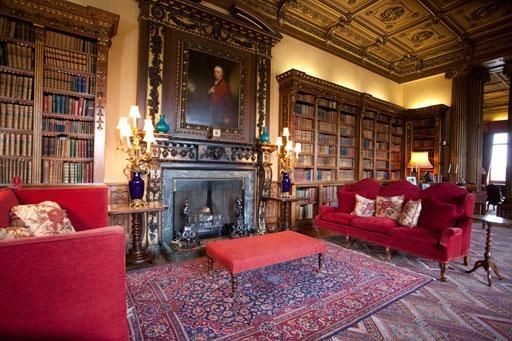
Dining room: The dining room was where the family ate their breakfast, lunch and dinner. It was also where the gentlemen took their after dinner drink before joking the ladies in the drawing room.
Drawing room: The Drawing Room was sort of a living/sitting room. It was mainly used in the evenings after dinner where the ladies would take their tea and coffee before being joined by the men. It could also be used for tea by the ladies during the day. The drawing room was seen as more of a women's room but any of the family could use it. The drawing room was a formal room but could also be used for more casual activities.
Library: The library is of course where the books are kept. The family would use this room for writing letters, reading, doing business with tenants and taking tea in the afternoons.
Bedrooms: The bedrooms would take up most of the upper floors. The unmarried women would sleep in one wing with bachelors at the furthest wing away. Married couples often had adjoining rooms with their own bedrooms in each and equipped with a boudoir or a sitting room.
Nursery: Was where the children slept, usually all together until old enough to move into bedrooms. They would be attended to be nannies and nursemaids round the clock.
Study: The study was a sort of home office where family could do paperwork, chill and write letters.
Dressing room: Dressing Rooms where usually attached to bedrooms where the family would be dressed and their clothes would be stored. The valets and ladies maids would have control of the room.
Hall: The hall was where large parties would gather for dancing or music or to be greeted before parties.
Furnishings and Decor

Most of these Great Houses were inherited which means, they came with a lot of other people's crap. Ornaments from anniversaries, paintings bought on holiday, furniture picked out by newly weds, all of it comes with the house. So most of the time everything seems rather cluttered.
As for Servant's Quarters, most of the furnishings may have been donated by the family as gifts. Most servants' halls would have a portrait of the sovereign or sometimes a religious figure to install a sense of morality into them.
2K notes
·
View notes
Text
Does anyone
have like an exhaustive master source for clothes/garments worn in China throughout every century? It can be either a link or a book i’ll have to buy. It also doesn’t have to be every century or every piece if clothing, I just want a good place to start. Preferably not from a blog, but i’ll still look at them.
I want to make clothes for an oc but I want to know exactly what i’m drawing and its significance/lack of significance/etc
944 notes
·
View notes
Text
hi! i might be able to help.
now take this with a grain of salt, i'm not a grammarian, but semi-colons are unique in that they're a vibes-based punctuation mark. whether or not you choose to use them at all is up to you, and when you choose to use them is also a choice.
a semi-colon looks like this ; and is basically just a comma with a period on top. this is because the semi-colon is functionally both a period AND a comma. it's used in grammatical situations where it makes sense to use both a period and a comma, and the author can't decide or thinks a semi-colon would flow better. this is especially important in creative writing where those choices can affect meaning and tone.
so for example, this sentence can be written three ways:
"He went left. She went right."
"He went left, she went right."
"He went left; she went right."
all of these are perfectly acceptable grammatical choices, it's up to you as the author to decide, and there are no wrong choices. I hope this helps! :)
I JUST WATCHED A VIDEO ON HOW TO USE SEMICOLONS AND IT ANSWERED NONE OF MY QUESTIONS. I'VE BEEN TAKING WRITING MORE SERIOUSLY FOR OVER THREE YEARS AND I STILL DON'T FUCKING UNDERSTAND THIS STUPID SIGN. (┛ò_ó)┛彡;
#writing#grammar#semicolons#i can't tell if this post was a bit#if it was and this seems condescending i'm so sorry#anyway i hope it helps someone#writerblr#writing advice#writing tips
228 notes
·
View notes
Link
#uquiz#uquiz link#personality quiz#writerblr#amwriting#fantasy#fantasy political drama#quiz#quizzes#oc quiz
6 notes
·
View notes
Photo

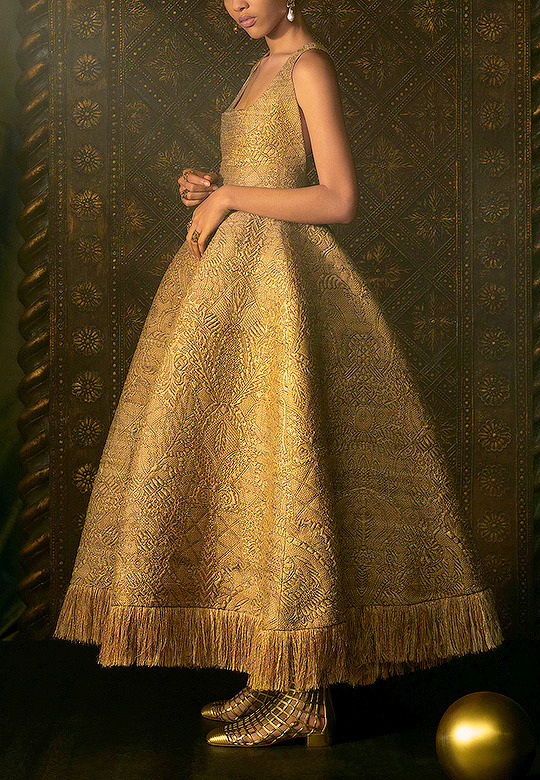


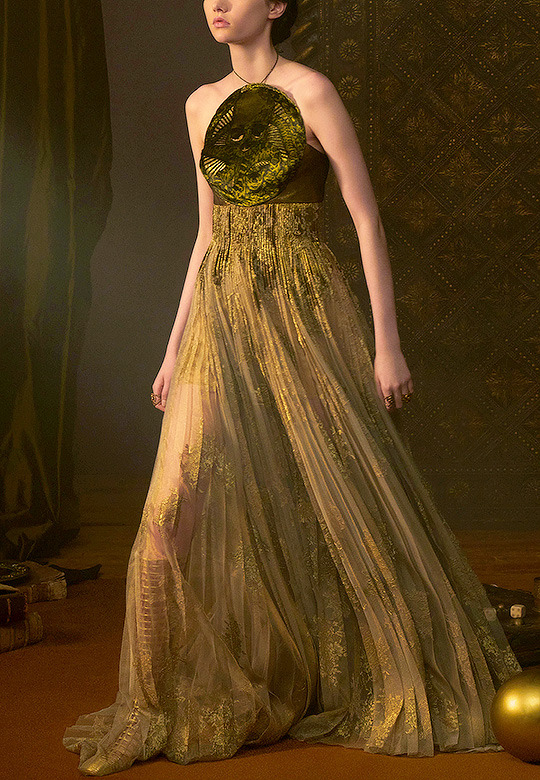




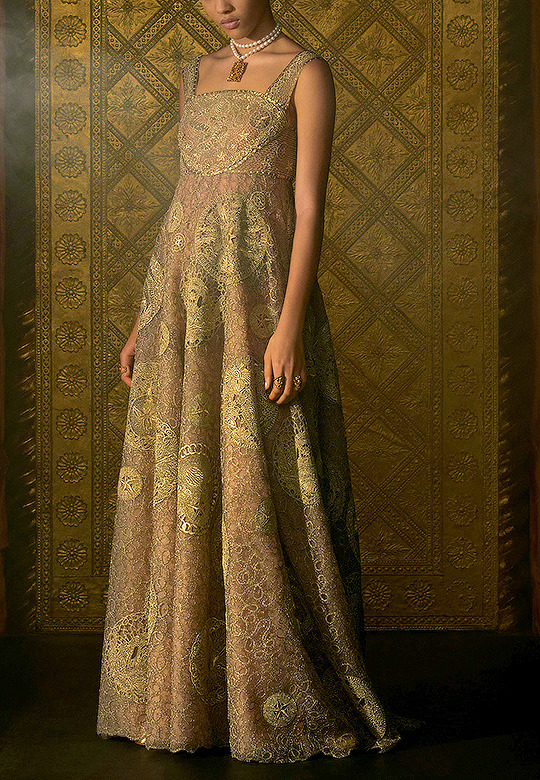
Christian Dior ‘Le Château Du Tarot’ Spring 2021 Haute Couture Collection Pt.1
7K notes
·
View notes
Text
tips on writing arab characters
first let’s cover the main mistake people make: what is an arab?
an arab is generally any person whose lineage comes from an arabic-speaking country. some examples: Algeria, Bahrain, Comoros, Djibouti, Egypt, Iraq, Jordan, Kuwait, Lebanon, Libya, Mauritania, Morocco, Oman, Palestine, Qatar, Saudi Arabia, Somalia, Sudan, Syria, Tunisia, the United Arab Emirates and Yemen.
now that you know what your character is (if you were aiming for east asian/south asian this is your cue to leave and educate yourself!) let’s talk about some important factors of an arab character.
decide what country they are from: this is ridiculously important! each arab country has a unique history and their cultures vary DRASTICALLY! it is extremely offensive to take bits and pieces of different cultures from various arab countries and stuff them all into one character. so first choose from where exactly your character hails. note: if you are writing in a fantasy world, this still applies! look into your specific country of choice and work around that.
not all arabs are muslims: while islam has greatly influenced arab culture, muslims and arabs are not synonymous. islam is a religion, arab is a lineage. if you choose to make your character muslim, be mindful of that religion, and if not, do not give the character islamic attributes (ie: hijabs, islamic names)
on naming your character:
first names: once again, be mindful of the character’s religion here. many names that have come to be associated with arabs are in fact islamic in origin (mohammed, abdullah, aabid…) look for arabic names and check the meaning and origin to be sure (here and here are some good websites that give definition and origin). arabic names generally do not have nicknames. yes even ‘mo’ for ‘mohammed’ or ‘al’ for ‘ali’ are all a foreigner’s look on arabic names. they don’t work. don’t use them.
middle names: arabs generally do not have middle names (which is to say, they aren’t assigned any at birth) instead, the child’s father’s name is their second name. so ahmed, son of salim would be ‘ahmed salim’ rather than be given an entirely new name.
last names: the last name of any arab is their father’s last name. generally, a married woman keeps her own last name rather than change it to her husband’s, and the children inherit their father’s name.
fashion: once again this differs entirely based on what country you’ve chosen but also please mind the year! if your novel is set in the equivalent of the 1800s traditional big turbans have been out of fashion for centuries!! more modern clothing can include checkered turbans that are worn by men and draped on the head, set in place by igal. but again, this depends on the country of choice. kuffiyehs are more symbolically worn in countries like palestine, syria and jordan. here and here are more in-depth descriptions.
the arabic language: arabic differs drastically from english in regards to grammar so using a translator site isn’t going to cut it. the main reason for this is that there each arabic country has its own dialect, and while some are similar, they all have obvious differences. a translator will give you the official arabic, which isn’t used in day-to-day speech. my advice is to have an arab speaker read through your lines before publishing.
stereotypes: for a bit of background, it was an arab (Al-Haitham) that became one of the first founders of modern optics by creating the first camera. an arab (Ibn Firnas) who first attempted flight. arabs invented the numbers currently used all around the world (yes 0-9 were created by an arab named al-Khwarizmi!) so let me tell you it is extremely disrespectful, hurtful, and downright wrong when arabs are presented as uncivilized, uneducated, and violent in books and media. keep this in mind while writing your character.
more than sand and camels: while many arabs hail from the desert and indeed a good many travels were taken via camel, that does not mean your arab character is required to know this. not all arabic countries are deserts. not all arabs own camels. if you must give them a form of travel, an often overlooked talent of arabs was horse-riding, and some of the best breeds of horse are arabian, so look into that instead!
misogynism and homophobia: this is a harmful arabic stereotype bred from the misunderstanding of islamic values. hijab/niqab (head and face covers) are the chosen form of dress for muslim women (though once again not all arabs are muslims!) along with many other values held by muslim men and women, there are cultural influences some arabs hold that are mistranslated by western countries. i might make a separate post about this alone, but just be mindful about this as you are writing your character. don’t make the girl oppressed and in need of saving. don’t make the guy sexist and arrogant.
war is not culture, it’s circumstance: the middle east has generally come to be associated with war and pain, a circumstance of which no one is happy about. this does not mean that your character should desire violence, wish to inflict pain, come from an abusive family, desire war, come from a background of war. these are all offensive and just another painful reminder of how the west sees arabs. if your character fits into any of those categories, now is the time to fix that.
if anything remains unclear, shoot me an ask!
1K notes
·
View notes
Text
basic things you should know about your main characters
how is their relationship with their family
what are their beliefs, if they have any
what is their motivation (preferably something unrelated to their love interest/romantic feelings, bc people care about other things, too, kthx)
who were they raised to be vs. who they became/are becoming
what are their plans for the future, if they have any
how do they feel about themselves and how it affects their behaviour (i mean. you can’t tell me a character is shy then have them do things shy people wouldn’t do, like?????)
how do they feel about things they cannot control?
and last but not least:
WHY IS THIS CHARACTER THE PROTAGONIST
LBR DO THEY EVEN MATTER
40K notes
·
View notes
Note
Hi! For research purposes, what could be considered the most intimate/romantic dances before waltz was introduced? Like, I know that waltz was a big revolution because it was too intimate for the time. Thank you!
La volta: This was an Italian Renaissance dance. It involved the male partner lifting his partner with his thigh, a hand on her waist and the other on her bodice to lift her in the air. It was a saucy, saucy dance.
Tango: The tango originated in Buenos Aires, and remains a popular dance. When it first became popular, the upper classes abhorred it because it was seen as a dance performed by the under class, pimps and other unsavory peoples. It of course, remains a popular dance
Cushion dance: The cushion dance is not exactly a scandalous dance in itself but it begins when partners kiss one another on the dancefloor. In the time of the Puritans and that cunt thing Oliver Cromwell, this was a big no-no.
The Charleston: The Charleston was a lively dance in the 1920s where the knees are twisted in and out, while the heels are kicked up. It was banned because it was apparently lewd and there was the probability that a leg might show.
Also try out Lucy Worsley's documentaries on dance | 1 | 2 | 3 |
50 notes
·
View notes
Text
how does being punched in the face feel like
86K notes
·
View notes
Text
Writing Kids of Different Ages
From someone who works with kids
Disclaimer: This is all based on my personal experience from working full-time teaching kids swim lessons. I’m not a parent or a school teacher but I’ve spent many many hours working with kids and here I’m just telling you what I’ve observed of kids at various ages. Also most of what I say is going to be in the reference of swim lessons but it can be expanded into whatever you need to work with

0-10 months: I don’t know much about this age group since people don’t really take their newborns to swim. Cute tho, little beans with chubby cheeks. Occasionally people bring there 4 months + babies in for parent/baby lessons and the kid basically just sits there in their parents arms like O.O for a half hour or cries the whole time.
10-15 months: These babies are always in lessons with their parents and honestly most of them just sit like O.O or cry the whole time. Very very attached to their parents but some of them will be willing to go with me (the teacher). If we sing songs a few of them start to clap along in a very uncoordinated baby clapping. If they know how to say any words at this point they really don’t talk to teacher but might wave hello or goodbye if their parents tell them to.
15-24 months: Basically the same as the above age group, but with a little more participation. Smile more, laugh more, they know what to do a little better. But mostly just clingy babies whose parents need to make them do everything.
2 years: 2 year olds vary a lot depending on the kid. One thing that most kids this age have is very bad separation anxiety. Some two year olds stay in classes with their parents and others start doing classes alone and more often the kids who start doing classes alone cry for 3-5 weeks before getting used to being without their parents. 2 year olds will start to talk but never saying much. They mostly understand directions you give them and are very vocal with “Yes! No! Mom!” type of things.
They can walk, some can actually swim on their own for small distances. Some kids still sit quietly and just follow directions but a lot start to have personality emerging, whether that means they’re still and laugh or they’re grumpy for very serious. Some of them can answer simple questions like “what song do you want to sing?” but often they’ll answer with motions instead of words. If they use words its very short like “FISHIES!” If they’re upset, they can’t be reasoned with and mostly just need to be distracted.
3 years: Three year olds start to talk a lot more! Early threes still don’t talk much, usually in just a word or two and can be really shy, they also often have really bad separation anxiety and might cry for a while when taken away from their parents. 3 year olds so listen and follow directions and they can have conversations but usually the understanding is a little missed. For example, this is part of a conversation I had with some 3 year olds
Me: Even though I’m an adult, I’m still not allowed to swim alone because if something happened to me, there wouldn’t be anyone around to help
Kid 1: No! I would drive an ambulance and I would come save you!
Kid 2: And I would be a fireman and I would come save you!
Kid 3: And I would be a police officer!
They know ambulance/fireman/police officer means helping someone in trouble and I said I would be in trouble. The logic leap makes sense even if they’ve missed my point of don’t swim alone. Three year olds can start to be reasoned with but usually in their late threes. One of my boys who was 3 years 4 months old often got upset when his parents left or when it was time to go underwater and he’d start to cry. Explaining things to him didn’t usually work, but if I picked him up and spun him around and dancing for a little bit he’d start to laugh and stop being upset and then he’d be willing to listen and do the skill.
4 years: Four year olds can talk in complete sentences and understand conversation. They can often be a little shy and don’t want to talk but they can. Four year olds are out of the toddler range and into the “kid” range so they have their own personalities and interests that are distinct from one kid to the next, but generally all the girls and some of the boys still get really excited if I tell them I saw Frozen 2. They’re very into Kid Stuff. They can listen (if they choose to) and follow directions but they often have limited attention spans and get distracted really easily.
One big thing with 4 year olds as opposed to 3 year olds is that they can often be reasoned with. In the same class with the 3 year old who I just spun around when he was upset, I had a 4 year old girl who would get scared of going underwater and she might start to cry a little bit but she could also be distinct in what’s wrong of “I don’t want to do that, that’s scary, I get water up my nose”. And for her when she was scared, I could tell her about the lifeguards who are there to keep her safe and show her the water isn’t very deep and if she was still super scared we could make a deal like “Okay, if you’re really scared this week we don’t go underwater but next week we have to do it, okay?” and she said okay and next week because she promised she would, she went underwater.
5 years: 5 year olds are a toss up really, what they’re capable of really depends on the kid. Some still have really bad separation anxiety and cry when their parents leave and won’t go underwater, some are already in our highest level class learning the butterfly stroke and how to do a flipturn. 5 year olds are conversational and usually pretty excited, they’ll tell me what they’re learning in kindergarten or what they did earlier that day. They can be a lot of fun because a lot of them are excited and goofy. They can listen to and follow directions if they choose to. But a lot of them don’t choose to. Short attention spans, really only interested in doing what they Want To.
6/7 years: These are little people! Little people with little thoughts and little feelings. Normal conversation with logic and reason. They can get really excited about stuff like competitions with each other and playing games. Kids this age have their own Wills, not just crying tantrums because they don’t want to do things but well thought out arguments to do/not do things but well thought out arguments can quickly shift to arms crossed “because I don’t want to!” They’re starting to get there with persuasion and reasoning but they aren’t quite there yet. Very goofy, they like to be thrown around and do stupid dances and make dumb jokes.
Once they get up towards 7 though, some kinds do start to get more kinda solemn maturity and those are some of my favorite kids because with them it’s just talking to People. They’re small people who don’t know how to do math or know what a mitochondria is, but talking to them really is just talking to people. Of course I can’t say “fuck” with them or anything but they’re truly just People. (Though some of them do know Too Much, I’ve had multiple 7 year old boys grab my boobs because they know that’s ~special~)
8-12 years: Honestly, once kids get over 8, the kids are hard to pick apart from one age to another and usually I just go by size. (Not a perfect system, I know). For kids this age, I’d say just consider them normal people with limited education and limited emotional control.
If anyone has any specific questions about kids they want to write, just shoot me an ask and I’ll help you out as best as I can!
365 notes
·
View notes
Photo
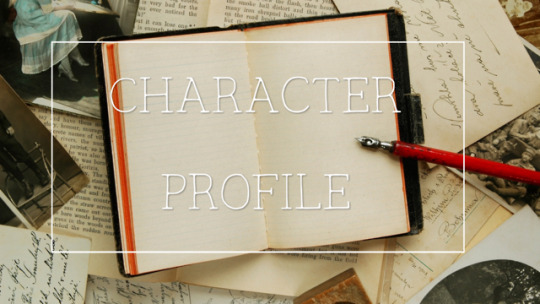
BASICS
What is their name? Is there any meaning in their name? Their age? What are the quick simple things that make your character? What is there role in your story?
PHYSICAL ATTRIBUTES
What is their body type and their height? What is their skin color? What is their hair, eyes and face shape? Are they considered attractive? Is there any birth marks or scars or distinguishing features? What do they think of their physical attributes?
SPEECH AND VOICE
What speed do they talk? Do they ramble or are they careful with their words? How does their speech reflect their personality? What is the repetition in their internal monologue?
ORIGINS
What is their emotional and physical origins? What was their childhood like and how does that manifest in their current life? What does their origins mean to them? What is the relationship with their family or guardians? How does their origins effect the story now? What haunts them? What makes them believe or reject the lie?
PERSONALITY
What is their positive character traits? Flaws? How does those positive traits and flaws manifest in the story? How is their personality linked to their origins and ghost?
CHARACTER ARC
Are they going to experience a positive character arc? What is the lie? What is their truth? How will they learn that truth?
Are they going to experience a negative character arc? What is the lie? What is the truth? How are they going to reject the truth for the lie?
Are they going to experience a flat character arc? What is the lie they are fighting? What is the truth? Why do they believe that truth? How will other people learn the truth via your character?
A PASSAGE
Write a paragraph that perfectly encapsulates their character
1K notes
·
View notes
Note
hey so I've never really written any fan fiction i usually do more abstract poetry stuff, but I really want to try, Ive started out a few things but I am struggling with characterization, and I don't really have much experience with that, so while I'm writing for someone I connect with it doesn't feel like them let alone dealing with the ones i don't have anything in common with. do you have any tips on finding their voice? I really want to make this work but I am at a loss. Thank you!!!!
Maybe try starting with a character study? That’s when you do a deep dive on a particular character and try to get to know them really well. By doing this sort of exercise first, you’ll help yourself feel more comfortable in that character’s skin and connect with them more - even if you don’t have much in common with them.
If you’ve never written a character study before or you want more information on what it is and how to write one, this article might be helpful.
Does anyone else have suggestions for other ways to improve characterization?
754 notes
·
View notes
Photo
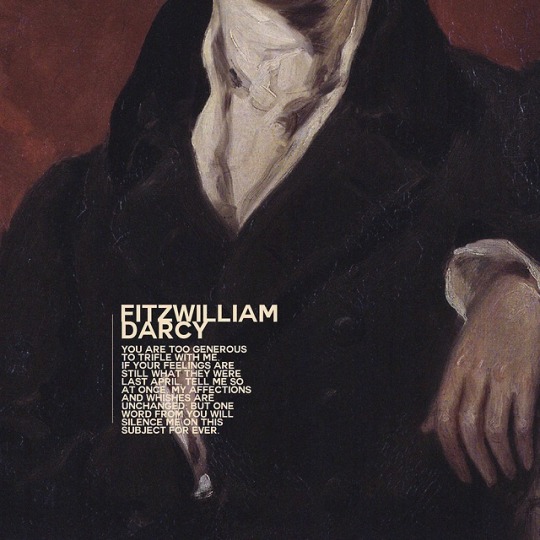

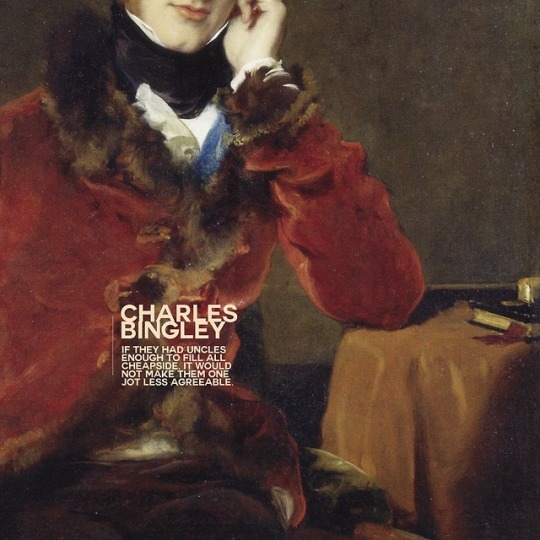
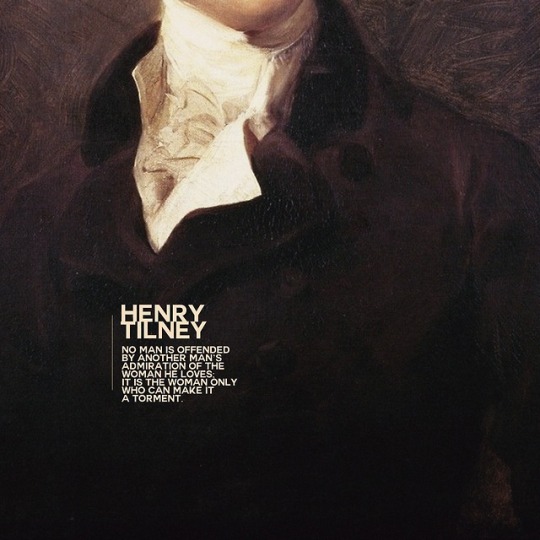

It is a truth universally acknowlegded, that a single man in possession of a good fortune, must be in want of a wife.
11K notes
·
View notes




